scubaman2151
Senior Member
- Joined
- Aug 25, 2007
- Messages
- 765
- Reaction score
- 0
Hi guys.
Well I have these grape vines in the backyard and they have never been properly trimmed or grown. They were there when we bought the house and we would just cut them back when they got too big. Well its time to start doing things right. I don't know how old these are maybe you guys could give me a clue on that, I believe they are at least 19 years old. There are 2 vines and they both are concord vines.
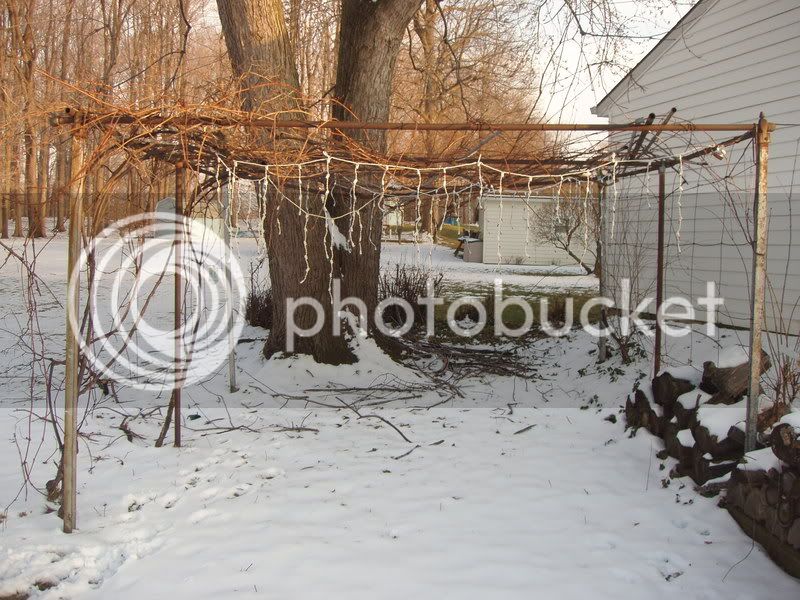
Lol don't worry about the x-mas lights those will come down.
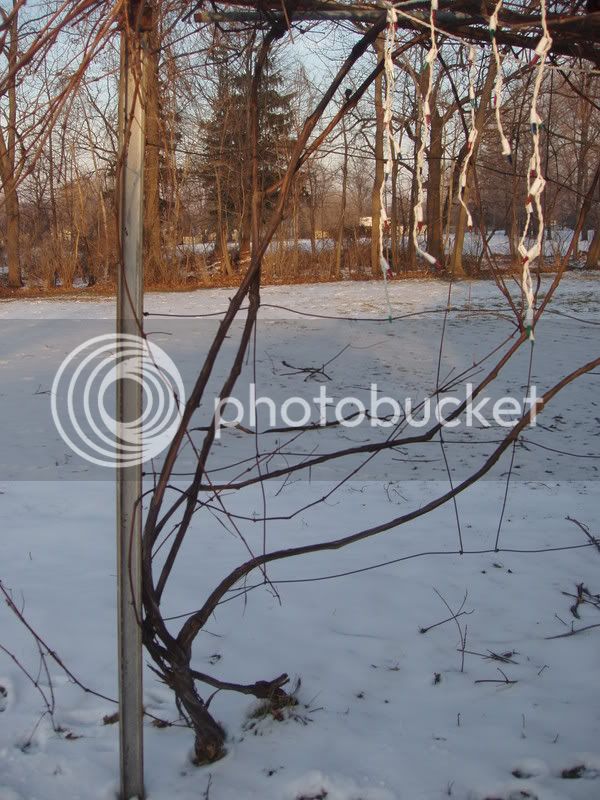
First vine^.
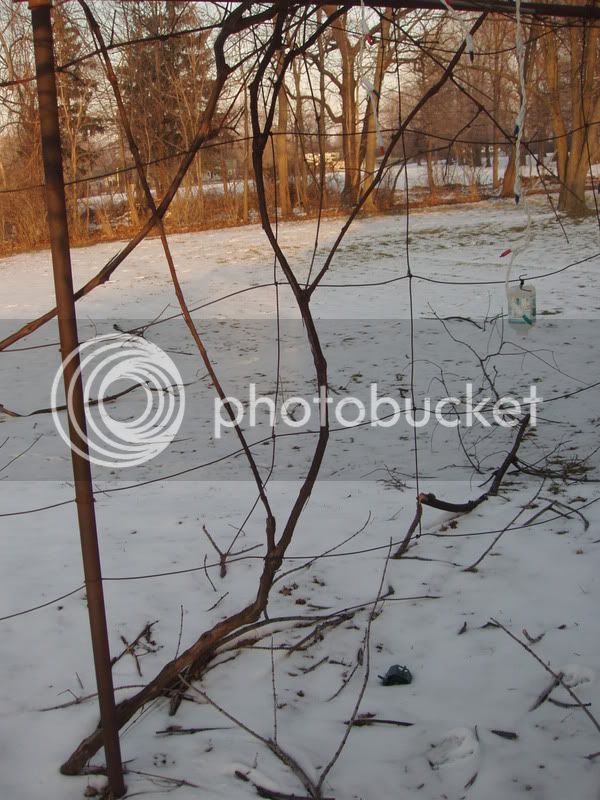
Second Vine^.
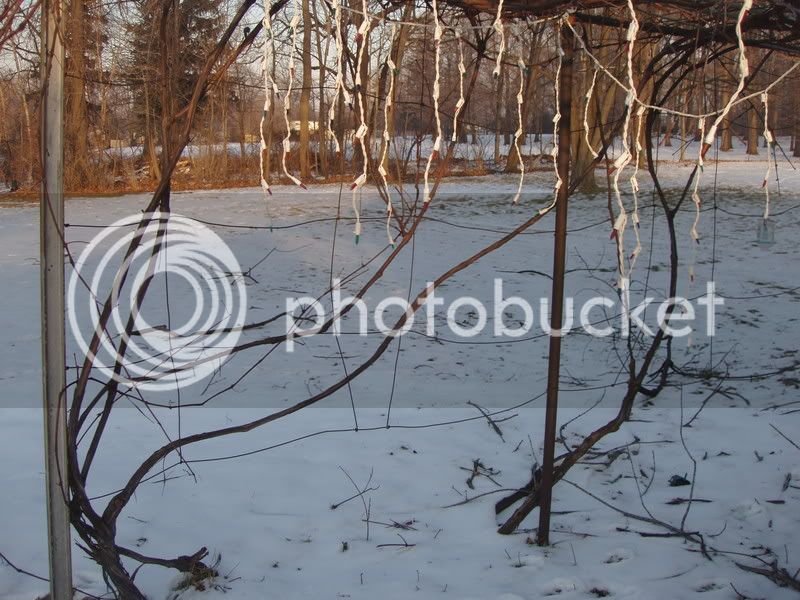
Both vines^.
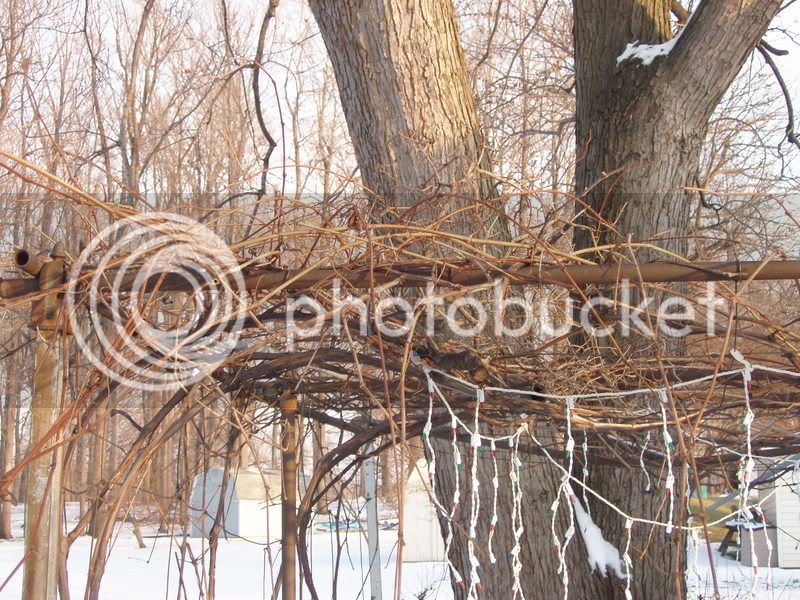
The mangled heap of vines on top of the wires.
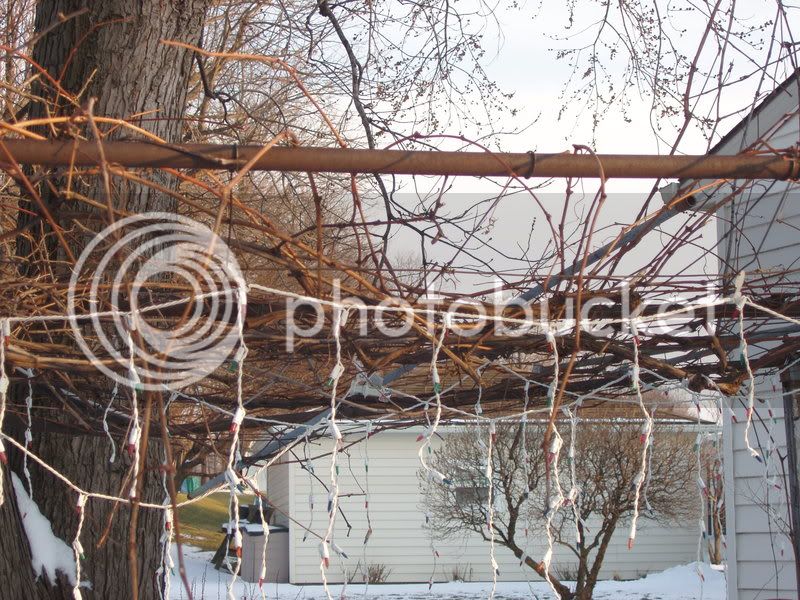
Same^.
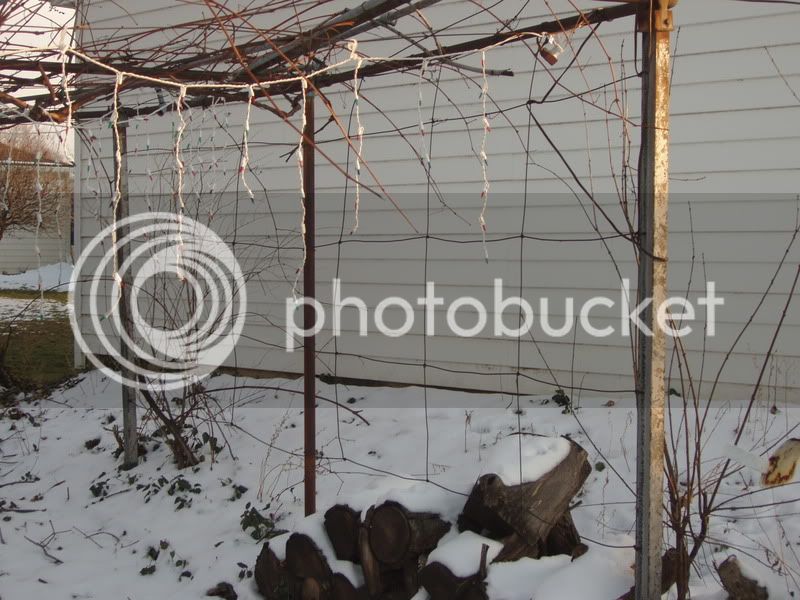
There used to be vines here, 2 I think but I'm not sure what happened to them. I would like to put 2 new vines into here but do I need to keep them concord vines as well or can I put like a vinifera type grape vine in?
OK update. I went out today and took another more in depth look at the vines. I will be referring to the pics like that first one posted is pic #1, the 2nd one posted is pic #2 and so on.
If you look at picture #2 there is actually 2 separate vines in that picture. The larger more thick one to the left and the smaller one from the right.
Then if you look in that last pic posted to-wards the back right before the back metal pole there is a 2ft-ish long piece of black. That is actually a vine that got cut off somewhere along the way. That is slowing growing back so I would need some advice on how to help that grow in the right direction. (We are supposed to get like 8in of snow tonight but if we don't Ill get some more up close pics for you guys tomorrow.) So in total I have 4 vines. 2 real close together, one by itself, then the one on the far right.
Now if you look at pics 2 the main vine to the right grows up about 1ft then sort of splits off into three trunks (Not sure if thats the right word) but one trunk is a little larger then the others. The second smaller vine to the right of the pic has basically one main vine that goes up into the trellis and then goes into smaller vines. In pic #3 that vine has that one main trunk that you can see then those two smaller trunks.
Now all these trunks feed into the top of the trellis and then all gathers into that big mess on top that you can see. What I was planning on doing was following the main trunks and as soon as the trunks hit the top of the trellis I would start trimming there. Just basically cut everything back except for as far as those trunks go then let the vines grow back this year so I can help them grow in the right direction or as evenly as possible. How does this sound?
Thanks for reading.
Scuba
Well I have these grape vines in the backyard and they have never been properly trimmed or grown. They were there when we bought the house and we would just cut them back when they got too big. Well its time to start doing things right. I don't know how old these are maybe you guys could give me a clue on that, I believe they are at least 19 years old. There are 2 vines and they both are concord vines.

Lol don't worry about the x-mas lights those will come down.

First vine^.

Second Vine^.

Both vines^.

The mangled heap of vines on top of the wires.

Same^.

There used to be vines here, 2 I think but I'm not sure what happened to them. I would like to put 2 new vines into here but do I need to keep them concord vines as well or can I put like a vinifera type grape vine in?
OK update. I went out today and took another more in depth look at the vines. I will be referring to the pics like that first one posted is pic #1, the 2nd one posted is pic #2 and so on.
If you look at picture #2 there is actually 2 separate vines in that picture. The larger more thick one to the left and the smaller one from the right.
Then if you look in that last pic posted to-wards the back right before the back metal pole there is a 2ft-ish long piece of black. That is actually a vine that got cut off somewhere along the way. That is slowing growing back so I would need some advice on how to help that grow in the right direction. (We are supposed to get like 8in of snow tonight but if we don't Ill get some more up close pics for you guys tomorrow.) So in total I have 4 vines. 2 real close together, one by itself, then the one on the far right.
Now if you look at pics 2 the main vine to the right grows up about 1ft then sort of splits off into three trunks (Not sure if thats the right word) but one trunk is a little larger then the others. The second smaller vine to the right of the pic has basically one main vine that goes up into the trellis and then goes into smaller vines. In pic #3 that vine has that one main trunk that you can see then those two smaller trunks.
Now all these trunks feed into the top of the trellis and then all gathers into that big mess on top that you can see. What I was planning on doing was following the main trunks and as soon as the trunks hit the top of the trellis I would start trimming there. Just basically cut everything back except for as far as those trunks go then let the vines grow back this year so I can help them grow in the right direction or as evenly as possible. How does this sound?
Thanks for reading.
Scuba










